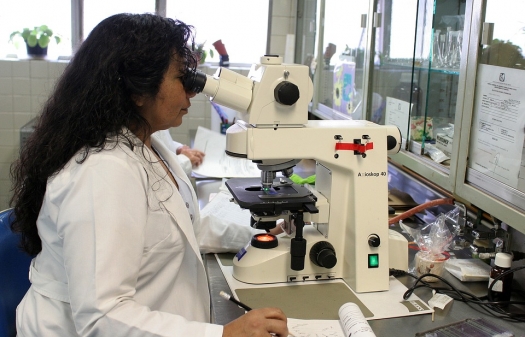LabWomanMicroscope.jpg

Photo by Ernesto Eslava / Pixabay
DNA Connexions is a CLIA certified BSL-2 clinical molecular laboratory specializing in the detection and identification of the genetic footprint of pathogenic microbiota. Our mission includes identifying bacterial, viral, fungal and parasitic microbes in human biological samples to provide practitioners with a comprehensive view of their patient’s overall health. While the Lyme and Oral Panels determine the presence/absence of microbial DNA, the ApolipoproteinE (ApoE) and Gluten Intolerance (GI) panels each provide genotypic information useful in understanding an individual’s propensity for Alzheimer’s, autoimmune/neurological conditions, and Celiac Disease.
The Lyme panel is a urine-based Polymerase Chain Reaction (PCR) assay designed to directly detect the DNA of Borrelia burgdorferi, the causative agent of Lyme disease, as well as the DNA of ten common vector transmitted co-infectors. While it has been shown that the urinary tract is a site of spirochetal persistence, we recommend some sort of physical provocation in order to achieve the most comprehensive sample possible. A positive test result does not mean the tested patient has Lyme disease, rather, it means the DNA of B. burgdorferi was detected in the sample provided. A negative test result indicates that the targeted species specific microbial DNA was not detected in the sample provided. Dilution studies indicate that we have the ability to detect as few as 10 organisms in a sample. Patients are encouraged to consult a Lyme-literate practitioner for diagnosis and interpretation of any molecular based results.
How is it possible to have a pathogen like B. burgdorferi in the system and not be infected with Lyme Disease?
This is very possible. At any given time, the body literally has millions of pathogenic microorganisms (bacteria, viruses, parasites, and fungi) living within, and the immune system is constantly fighting them. Therefore, the mere presence of a microbe does not necessarily make us sick. Lyme disease, like all other microbial infections, requires an already compromised immune system in its host. A ‘pathogen’ is a harmful, foreign organism within the body which may activate the ‘immune system’ which is the body’s self-defense mechanism. If the immune system is strong, then the pathogen will eventually be completely eradicated. However, if the immune system is already compromised by poor health or other conditions, the pathogen can multiply, becoming an ‘infector,’ and the resultant immune response to this pathogenic aggression is an ‘infection.’ So, applying these terms to the Lyme discussion: a) Borrelia burgdorferi is either a temporarily co-existing pathogen or an active infector; b) Borreliosis (i.e., Lyme Disease) is an infection. The same distinction applies to the ‘co-infectors’ this panel is designed to detect.
Many historical tests for Lyme Disease have been antibody or immune response based. How is the DNA Connexions test different, and why may it be better to have a direct test vs. an indirect one?
Traditional tests for Lyme Disease gauge the patient’s immunological response to having been exposed to an organism. This is an indirect method of testing. These tests are detecting antibodies against B. burgdorferi that are made by the human body when exposed to the organism. However, it is known that B. burgdorferi has evolved multiple mechanisms to evade the immune system’s responsiveness. Therefore, a test designed to gauge an immune response in a likely immune-compromised patient is inherently faulty.
The DNA Connexions Lyme Panel is a direct DNA test, designed to detect the DNA of the causative organism itself. Directly looking for the actual presence of the causative microbes themselves means that neither the patient’s immune response nor the stage of disease progression is material for drawing conclusions.
What is a PCR test? Can PCR be used to detect Lyme Disease? How is the DNA Connexions Lyme Panel different from other PCR tests which, in the past, have led to many false negatives?
The polymerase chain reaction, or PCR, is a molecular biology tool used to make many copies of a specific sequence of DNA, or in this case, genes specific to Borrelia Burgdorferi, and the co-infectors included on this panel. PCR utilizes a machine called a thermal cycler to heat and cool the reaction in a controlled manner so that a target sequence is exponentially amplified.
First DNA is denatured, or the double helix broken into two single strands, with a very high temperature. Then, species specific primers anneal, or bind, to their target DNA sequence. Once the primers have annealed to their specific target sequences, Taq polymerase (the enzyme that replicates the DNA) fills in the other half of the single strand of DNA, making a copy of the original DNA fragment that was denatured. The number of target sequence is doubled with each cycle, yielding millions of copies of the target sequences at the end of the process. The reactions are then visualized and scored as present or absent.
Under optimal circumstances, only a single copy of the target region needs to be present in a given sample. In-house testing and statistical analysis have shown that this test is highly sensitive. In fact, it has shown that this PCR protocol can detect as few as ten organisms in a urine sample, and can detect the presence of Borrelia Burgdorferi at similar, if not slightly higher, rates than can other known tests for Lyme.
Explain sensitivity and specificity with respect to laboratory testing. How sensitive and specific is the DNA Connexions Lyme Panel? How common is it to get a positive result with the DNA Connexions Lyme Panel?
Sensitivity refers to a test’s capability to find a target gene or antibody, if present. For example, if you have 100 known positive patients and your test detects B. burgdorferi in 97 of those patients, your test has a sensitivity of 97%. Specificity, meanwhile, refers to the test’s ability to definitively identify the molecular target with little to no chance that it could be a different target. DNA Connexions dilution studies have demonstrated our ability to detect as few as 10 organisms in a sample. We use species-specific primers for their Lyme Panel, and are continually working to ensure that they retain a high level of specificity as new organisms are discovered and current ones evolve.
The DNA Connexions Lyme panel currently tests for four species specific regions of B. burgdorferi. Roughly 20% of patients that test, test positive for the presence of one or more of these regions. The national average for a positive test is between 10% and 20% with other testing methods.
How long after a tick bite might it take to detect associated pathogens using the DNA Connexions Lyme panel?
With antibody-based assays, the types of the antibodies present are different in the various stages of disease. For example, IgM antibodies are only clinically relevant in the very early stages of infection (after the bulls-eye rash, typically within the first month), while IgG antibodies are clinically relevant with infections lasting more than 4 to 6 weeks. Theoretically, as soon as there is an active infection in the body, PCR should be able to detect the organism. In actuality, the timing of the process of dissemination, where B. burgdorferi all but leaves the blood stream and takes up residence in various sites of the body, varies greatly from patient to patient. The progression of this process is different for every individual, and therefore, timing of DNA detection via PCR can vary.
What organisms does the DNA Connexions Lyme Panel look at? Are you planning to add additional organisms over time?
The main organism is B. burgdorferi, the causative agent of Lyme Disease. Due to the evasive nature of this organism, we include for 4 species-specific regions of B. burgdorferi. The tick that most commonly carries B. burgdorferi can also transmit a plethora of other infections, called co-infections. The DNA Connexions Lyme Panel also tests for several co-infectors, including several species of Babesia and Bartonella, two other Borrelia species, Ehrlichia chaffeensis, and Anaplasma phagocytophilium, and we are constantly striving to broaden their Lyme Panel.
Explain the geographical distribution of B. burgdorferi and the co-infectors that DNA Connexions detects?
There are certain regions of the country and the world where Lyme Disease is endemic. ‘Endemic’ means that there is always a certain level of persistence of a specific disease within a population. Since Lyme Disease is most commonly transmitted in the United States by the deer tick, areas with a high prevalence of deer ticks will likely see higher persistent level of infection. For instance, according to the CDC, in 2015, 95% of confirmed Lyme Disease cases were reported in just 14 states: Connecticut, Delaware, Maine, Maryland, Massachusetts, Minnesota, New Hampshire, New Jersey, New York, Pennsylvania, Rhode Island, Vermont, Virginia, and Wisconsin. DNA Connexions tests patients from all over the world that suspect they have been infected by B. burgdorferi. People today are very transient, so where someone currently lives doesn’t necessarily mean that is where they were infected. It just takes one tick bite, and as little as 20 minutes for the tick to transmit the pathogens it harbors.
Can a panel result change from positive to negative with treatment and repeat testing?
Yes, this can happen. B. burgdorferi is known for it’s immune response evasion and being notoriously difficult to eradicate. There are some people that become infected and never even know because their immune system clears the infection on its own. Conversely, there are other patients that become severely and chronically ill despite multiple treatments and therapies. As far as going from positive to negative, this is likely the result of a successful treatment regimen. There have been cases where a robust infection could be inhibiting proliferation of a different organism. For example, patients who initially test positive for B. burgdorferi, undergo treatment, retest, and show a negative for B. burgdorferi, but then test positive for a co-infector, that was likely subsequently able to flourish with the clearing of the active B. burgdorferi infection.
If a person effectively treats an infection and then feels their symptoms are gone, should they wait a certain amount of time before retesting?
Theoretically, with a 100% effective course of treatment, a patient should be able to test the effectiveness of a treatment within two weeks of the treatment conclusion. In the real world, however, it could take months or even years to completely clear all causative microbes. Initial testing establishes a baseline of microbial presence, and subsequent testing can be an indication of treatment effectiveness.
Does a patient have to have a doctor order the DNA Connexions Lyme Panel and what is the cost of the panel currently? Does insurance cover it?
Most patients order this test through their practitioner. At this time, patients also can directly request a single collection kit. The cost of the Lyme Panel is $650 USD, and a patient can opt to rush their sample for an additional fee of $150. We do not work with insurance companies but encourage patients to communicate with their insurance carriers directly for possible coverage. The $650 fee does not include any of the interpretation, diagnosis, or recommended treatment that a Lyme-literate physician would provide after interpreting the test results. Understandably, most physicians charge an additional fee for those services.
For more information visit the DNA Connexions website.


